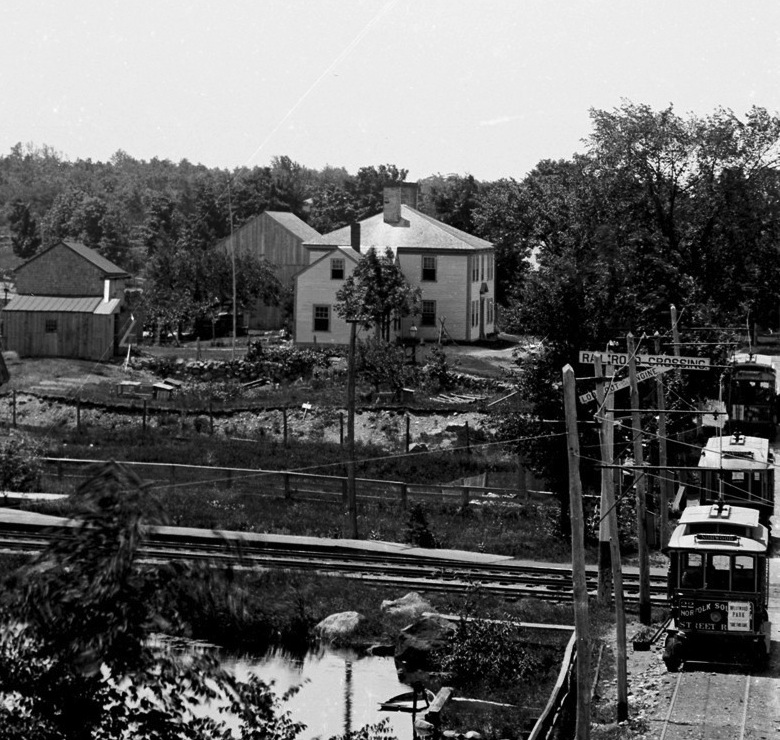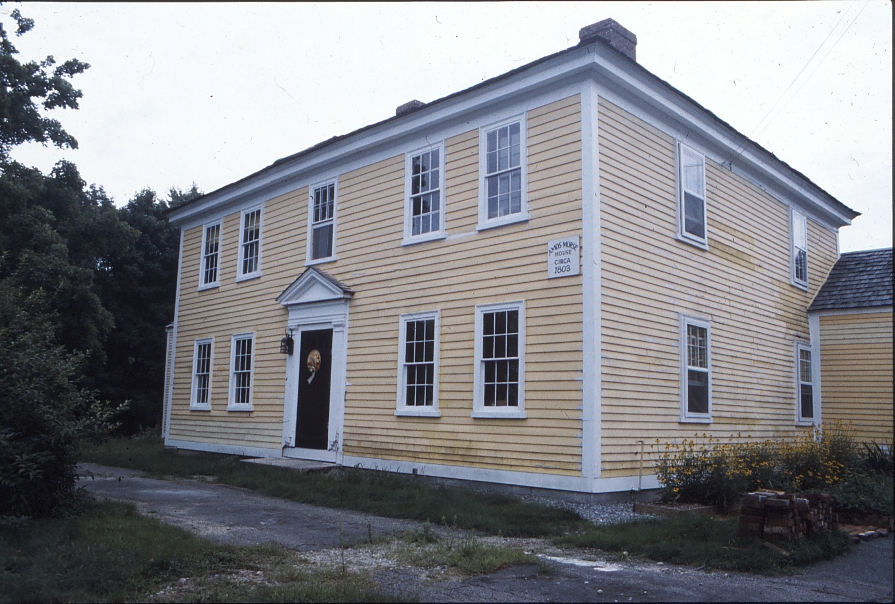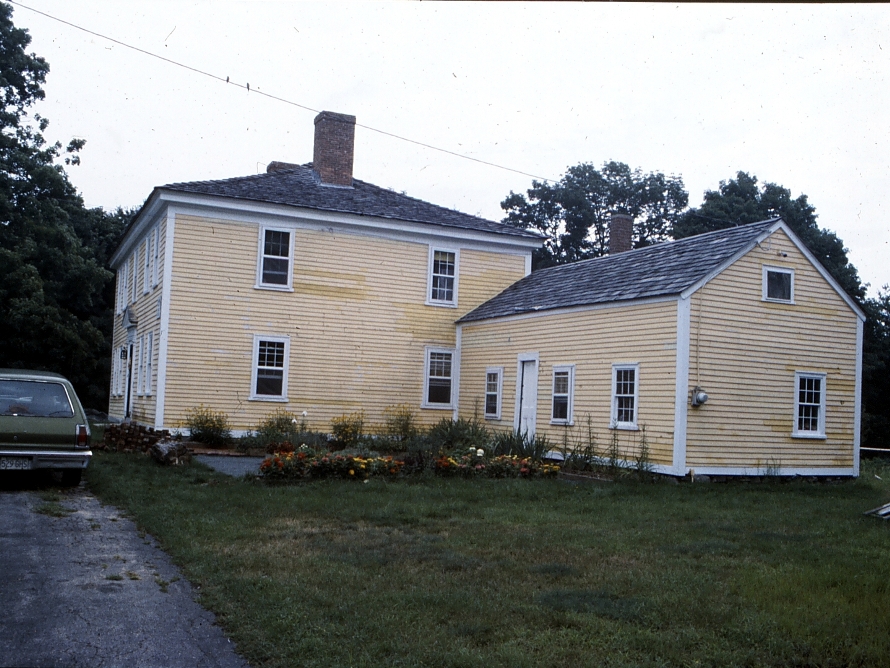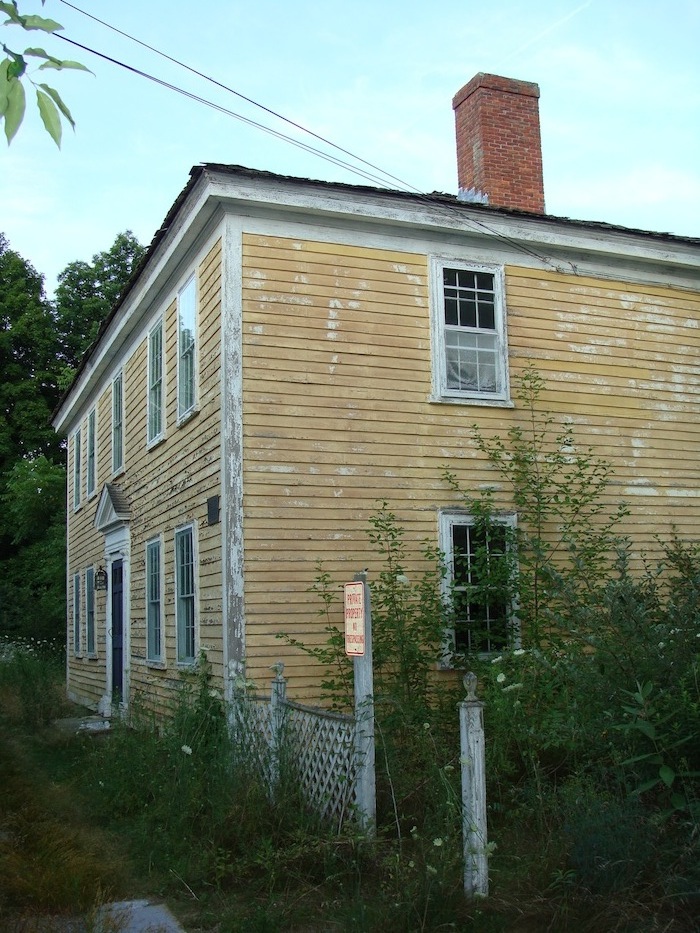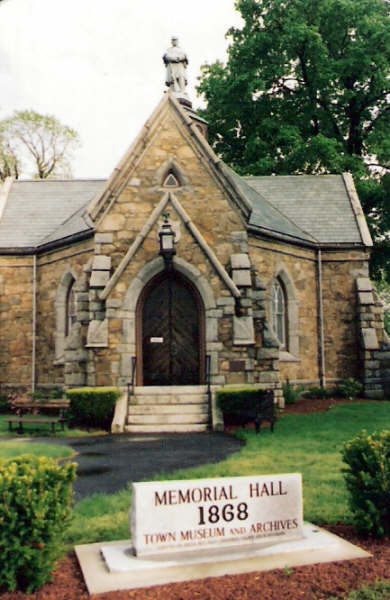
|
Society & Commission
|
|
Our History
|
|
KCH House
|
The Amos Morse House
Jebediah Morse, Amos Morse's father, dammed the Neponset River in North Foxborough and started a forge in 1734. The business provided enough income that Jebediah was able to build a home nearby for his sons Amos and Simeon. Amos operated a grist mill and saw mill nearby and this area of Foxborough contained homes of so many Morse family members that the area was known as Morseville.
Amos Morse built this federal style home in 1803 for his two children Amos Junior and Sarah just as Jebediah Morse had built a home decades earlier for his sons Amos Senior and Simeon. With the possibility of two growing families living under the same roof Amos made sure to build ells at each end of the home to provide private areas for each family. The home was built on a small hill, contained six working fireplaces when constructed, and the rear yard provided a scenic view of Crack Rock Pond.
Circa 1900 - A view of the Amos Morse house in Foxborough Massachusetts. The home is shown facing North Street with the Norfolk Southern Trolley line passing by. The barn shown on the left side of the photograph has since been demolished. Note the railroad line and small section of Crack Rock Pond visible in the lower section of the image.
When the home was built a small but active straw hat industry existed in town. In many area homes straw was braided by women in the family and later bartered at local stores. These braids were later formed into straw hats by workers in smaller straw hat shops. In 1820 John Corey leased the southwestern ell of the Amos Morse house where he operated his own straw shop. John Corey and his partner Daniels Carpenter were the first local merchants that were large enough to pay money for braided straw and complete hats. They later shipped their finished hats to Boston and New York from the nearby North Foxborough railroad station (just off the left in the photo above.)
This was a vibrant time in the home's history as it housed two families with six children and a thriving small business. Corey and Carpenter continued to operate their straw shop from this ell until 1836. John Corey passed away in 1840 but Daniels Carpenter's family continued in the straw hat business and later formed the Union Straw Works in 1853. This industry remained a driving economic force in Foxborough into the 20th century.
After the death of Amos Jr's wife a portion of the home was leased to Edmond Carroll who was also involved in the local straw hat industry. Edmond's daughter Harriet was required to braid straw most days as part of her household chores. She would sit in the upstairs hallway and braid straw out the home's center window--when the straw reached the granite front step she was done for the day and allowed to go outside to play. It was the marriage of Nelson Morse, son of Amos Morse Jr., to Betsey Everett in 1836 that ended the straw hat shop in the southwestern ell as it was plastered and converted into a kitchen for the young couple.
Meanwhile the Morse family and their descendants expanded their nearby mill operation into a large trip hammer and hoe factory. The operation also manufactured wooden boxes that were used in the transport of straw hats via the local railroad line.
Late in life Nelson and Betsey Morse adopted Ada Clare who later married James Knight. Ada had moved to Dorchester when in 1901 she inherited the Amos Morse house and returned with her husband James and six year old daughter Dorothy. It was Dorothy Knight Johnson that would be the last family member of the Morse family that would occupy the home. Dorothy lived in the home until the early 1980s. In her later years she reluctantly gave up painting the home from a ladder but continued to maintain the home's flower gardens.
Circa early 1980's - This photograph shows the front of the main house. The center window is where a young Harriet Carroll would braid straw until it reached the granite step below.
Circa early 1980's - This photograph shows the Southwestern ell that housed the straw shop of John Corey. Many residents of Foxborough recall seeing Dorothy tending these and other flowers on the property on a daily basis well into her 80's.
2018
The historical narrative appears here courtesy of Jack Authelet's December 13, 1979 Foxboro Reporter historical feature "The House That Amos Built" and the home's application form for the National Register of Historic Places. The home was placed on the National Register of Historic Places in 1986 due to its significance with the growth of industry in Foxborough both in its eighteenth century mills and in the manufacture of straw hats.
This structure was razed in 2020.
This page was last updated 09/30/2023
Images appearing on this website may not be reproduced in any manner without express written permission from the Foxborough Historical Commission.
